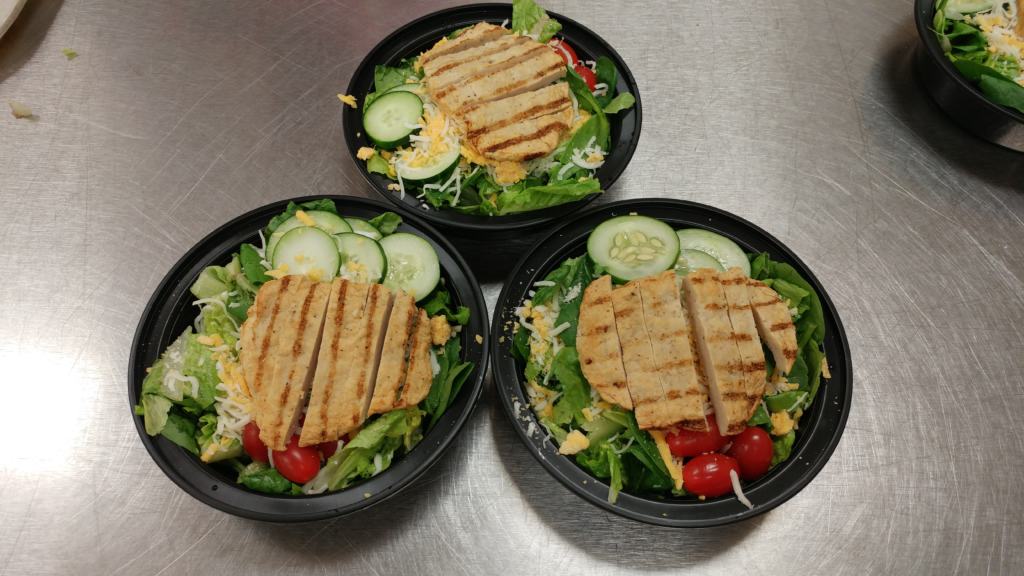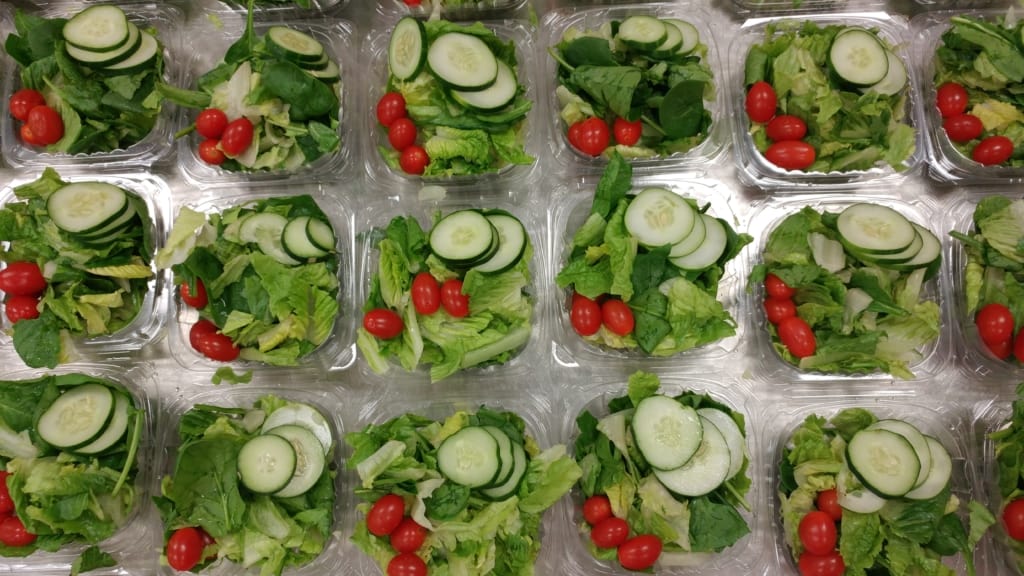If I asked you to describe your own school lunch experiences in three words, would those words be mostly positive? Perhaps not. Many of us have school food memories that have stuck with us because they were rather unpleasant. Unfortunately, we tend to continue projecting those experiences from many years ago onto our expectations of what school food is today. School food is complicated, and most of us have opinions about it. But one thing is clear: most of us who do not work directly in school food do not really understand how it works.
What is a school food program and how did it evolve?
The term ‘school food program’ refers to school meal programs that accept federal funds and must therefore abide by federal nutrition guidelines.
The United States has not always included school lunch, breakfast, snack, or after school food programs in the federal budget. In 1946, after recognizing that many young Americans were undernourished and unfit to serve in the armed forces during World War II, President Truman signed the National School Lunch Act, which stated,
“It is hereby declared to be the policy of Congress, as a measure of national security, to safeguard the health and well-being of the Nation’s children and to encourage the domestic consumption of nutritious agricultural commodities and other food, by assisting the States, through grants-in-aid and other means, in providing an adequate supply of food and other facilities for the establishment, maintenance, operation and expansion of nonprofit school lunch programs.”
For several decades, the federal budget for school food programs continued to expand to serve more children in more ways, including through the 1966 Child Nutrition Act that added the School Breakfast Program.
In 1981, the Reagan Administration cut the National School Lunch Program (NSLP) budget by $1.5 billion, shrinking the size of school lunches, reducing student eligibility for free and reduced-price lunches, and initiating shortcuts to meeting mandated nutrition standards. Perhaps the most notable example: ketchup was considered a “vegetable.”
These shifts led to the not-so-appealing school food of the 1980s and ‘90s.
Fast forward to the 2000s. As in 1946, the federal government recognized once again that our students were entering adulthood in poor health. This time, poor nutrient status was accompanied by overweight and obesity.
To reverse this trend, the Obama Administration signed into law the Healthy Hunger-Free Kids Act of 2010. Nutrition standards were made stricter in an effort to improve health, and worries about poor taste and increased food waste by dissatisfied kids abounded. (Most research has shown that kids are eating more fruits and veggies and are not wasting more food since these policies have taken effect).


How are school food programs funded?
Currently, three tiers of payment exist for school breakfasts and lunches. The federal government gives money to every state to offset the cost of each free, reduced-price, and paid (in which the student pays the full price) meal.
For the 2016-17 school year, the maximum rates for most states were $3.33 (free), $2.93 (reduced) and $0.38 (paid) for school lunches and $2.04 (free), $1.74 (reduced) and $0.29 (paid) for school breakfasts.
In most states, the state government contributes an additional amount of money beyond the required federal match for each meal served at school. North Carolina is not one of those states; it contributes a small amount for each reduced-price breakfast meal, but no additional funds for school lunch.
How do school food programs operate?
If $3.33 already seems like a tight budget to cover the cost of a high-quality lunch, it gets even trickier. A school nutrition director who oversees the nutrition programs for a school district is responsible for running an entirely separate, financially sustainable enterprise.
In addition to covering food costs, funds must also pay for staff, equipment, and even the utilities needed to keep the lights on and run the equipment in a school kitchen. When all the overhead is paid, about $1.00 per student is left to pay for the food in each meal. If you typically spend more than $1.00 on your lunch each day, think for a moment about how challenging it would be to prepare a high-quality meal for only $1.00.
Challenges school food programs face
Why does my cafeteria use disposable Styrofoam trays? That’s bad for the environment!
A drought in one county meant all dishwashers were removed from the cafeterias to save water. To use reusable trays and dishware, it would cost hundreds of thousands of dollars to retrofit the kitchens with dishwashers and reusable supplies and most nutrition programs do not have funds for that in their budgets.
Can we do a fundraiser to bring extra money into the school food program to offset the cost of better food?
You could, but due to regulations associated with receiving federal funds, a school nutrition program may be required to use the money you donate for purposes other than what you had in mind. An alternative would be to use the funds you raise to purchase equipment and donate those items to the school.
Why is there not more local food in our schools? We even have a school garden!
North Carolina requires all produce served in school cafeterias to come from GAP certified farms. GAP stands for “Good Agricultural Practices.” From a health and safety standpoint, the practices protect students from potentially contaminated and poorly handled food. However, it is costly to obtain and maintain GAP certification, which means many small and mid-sized farms aren’t able to participate. The rules also mean school gardens are not permitted to supply produce directly to the cafeterias. School gardens are still a great way to expose students to new fruits, vegetables, and herbs, and there are no rules against taste testing in the classroom.
Why can’t we have a salad bar at our school?
Maybe you can! You should ask your Nutrition Director. But it is also possible that your municipal-level health department does not allow salad bars in school due to health and safety concerns. There are plenty of valid reasons for this, but not eating enough vegetables may also pose health and safety risks. Talk with your school leadership, nutrition director, and your municipal policymakers. Keep in mind, there are many creative ways to serve fresh, delicious veggies to students on or off a salad bar.


What does school food look like in North Carolina today?
If you are a parent, one of the best ways to find out is to visit your child’s school and eat breakfast or lunch with them one day. You’ll likely find that it’s much higher quality and more nutritious than what you remember from your school days. But you may still find room for improvement. And you won’t be alone! Our state is at the forefront of pushing for federal changes to school food policy that would improve school food for all our kids.
The NC K-12 Culinary Academy was launched in 2016 to provide career training and innovative menu options to school nutrition staff. Feeding students food that is high-quality, tasty, culturally relevant, and nutritious is a challenge.
We know that schools across North Carolina face many different challenges in serving good food to students. In order to better understand the gaps and assets in the school kitchens in each district, we have asked nutrition directors to complete a survey about their infrastructure and capacity. This is an ongoing effort, and we need many more directors to respond before there is a complete picture of our state’s resources and needs. Here’s a sneak peak of what we’re learning so far:
– Seven nutrition directors have responded, representing rural, urban, and suburban districts spanning the state.
– The average number of students in each responding district was approximately 25,000.
-An average of 61 percent of the student body is served lunch daily. About a third of students in the respondent areas are served breakfast daily.
-Six of 7 directors reported participating in the Farm to School program.
If you work as a nutrition director, we would welcome your input. Please contact us.





